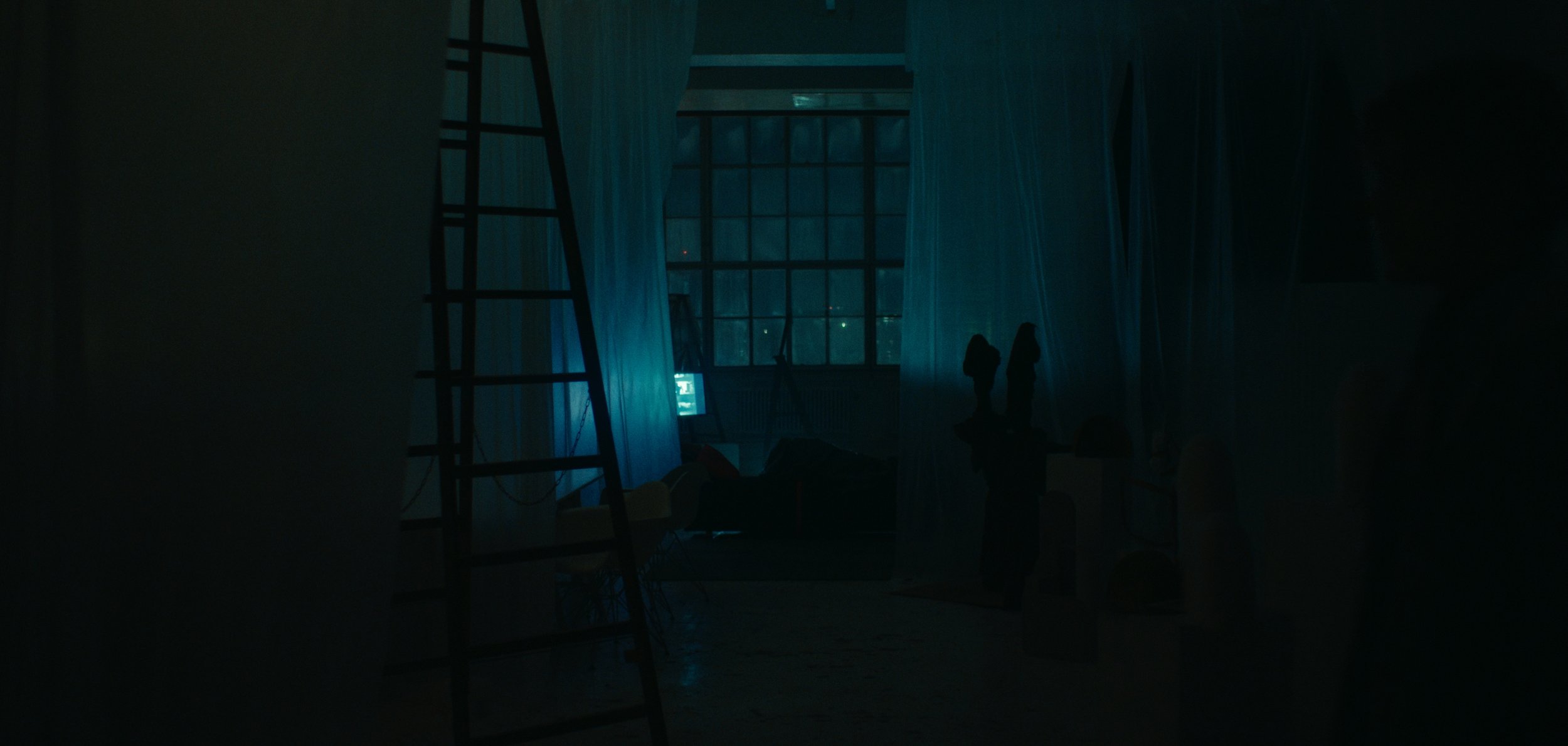MONSTER
A world of mystery, misogyni and sexuality unfolds over the course of a single night. What begins as a detective story ends as a high paced action thriller.
With roots in the film noirs of the 1900’s and references to films suchs as China Town and modern indie successes such as Good Time, MONSTER builds upon a genre, that is ever relevant to genre-enthusiasts and cinephiles all over the world.
Keep reading and watch the Feature Film Pilot right below!
Watch the 10 minute Feature Film Pilot
Logline
When Claudia goes missing, Sartre retraces her steps through lively parties, exclusive art openings, and cozy basement bars. As the mystery unfolds and with Claudia's unhinged ex-boyfriend on his tail, Sartre comes to realize that he may not be her savior, but actually her enemy.

Classic Structure, Contemporary Narrative
By shadowing a misogynistic and narcissistic protagonist during his moments of awakening, the story becomes a relevant and modern exploration for today's audience while echoing an iconic character archetype like Travis Bickle from "Taxi Driver" or Louis Bloom from "Nightcrawler."
The Story
ACT 1
When 22-year-old Simon, who calls himself Sartre, discovers that his 18-year-old foster sister Claudia has run away from her boyfriend, the drug dealer Charlie, he senses something is wrong. Claudia and Charlie's relationship has always been rocky, possibly because Claudia is soon moving to Berlin with Sartre, where he's convinced they'll thrive as artists.
Sartre visits photographer Jonathan, where Claudia sometimes stays during turbulent times with Charlie. Upon arriving, he finds the door open, the lights off, and the studio trashed. Jonathan has been beaten by Charlie's right-hand man, Jesper, but Claudia is nowhere to be found. Jonathan reveals that Claudia left abruptly after receiving a mysterious phone call.
ACT 2
Sartre finds Claudia's abandoned bag containing a mysterious, unlocked phone that has received only one call from a hidden number. Could Claudia have started dealing drugs, and if so, why not for Charlie?
Sartre's friend Muhammed shares a rumor that Claudia has stolen from Charlie. They take Claudia's phone to a rival gang, who also disavow it. They learn of a similar phone found in a friend's apartment after her suicide. Sartre insists they find the woman behind the mysterious phones themselves.
At the library, they meet a girl who says she's paid to deliver these phones. Accepting the phone leads to a call with a time and place, but she doesn't know what happens next. Based on clues, Sartre and Muhammed deduce Claudia is likely at a major international law firm in Nordhavn. Just as they solve the puzzle, Jesper shows up. A chase ensues, leading them to Nordhavn, where they find Claudia among wealthy young people humiliating women for money. They manage to escape Jesper in the crowd.
ACT 3
It turns out Charlie wants Claudia to buy her freedom for all the drugs he's given her over time. Claudia had tried to use the mysterious phone, and Sartre's involvement has ruined her plan. They decide to sell some cheap coke they buy from a friend to finance their escape to Berlin. However, when Claudia discovers the stolen gun, she hesitates. With the police closing in, she must choose between Sartre and prison.
They manage to evade the police and reach their friend Markus's car. A high-speed chase leads them to a boat, and they silently navigate through the harbor. Waiting atop a hotel, it seems Claudia forgives Sartre. The drug deal goes through, and they get the money. But as they descend in the elevator, Claudia reveals she never intended to go to Berlin. She plans to get clean and study, suggesting Sartre should do the same. She leaves with Jesper, leaving Sartre stunned and alone.
ACT 4
With only 30 minutes until the Berlin train departs and no idea where Claudia has gone, all seems lost until a hotel receptionist suggests tracking her phone. Sartre rushes to Charlie's apartment, where he uses the stolen gun to shoot the lock. He finds Claudia unharmed but Charlie gasping for breath. As the morning sun breaks, the atmosphere is oddly anticlimactic. Claudia takes the initiative; there's still time.
At the train station, Claudia finds a seat for Sartre before leaving. Realizing she's gone, he rushes after her. In a touching farewell, Claudia takes control, insisting, "It's always been you!" For the first time, Sartre understands that he's the problem. Claudia can still check into rehab, and Sartre can still catch the train where the money sits unclaimed. A tender goodbye. Claudia runs from the platform as the train whistles. Whether Sartre boards the train or stays on the platform to be arrested remains unknown.

A New Generation of Filmmakers
Re-thinking the old ways, we manage to build larger worlds, create new cinematic landscapes and a new cinematic language at lower cost than ever. The technology keeps evolving. Why shouldn’t we?
CGI and World Building
Monster challenges the norms of filmmaking in it’s use of unusual locations, heavy use of CGI and sound to build exotic worlds out of real life Copenhagen.
Virtual filmmaking is for everyone
Until today, virtual filmmaking has been reserved for big budget international blockbusters.
After a multitude of test, we ended up shooting the motorcycle scene inside our office space with the use of two LED computer monitors.
A Lead To Remember
Lucas Lynggaard Tønnesen is a Copenhagen-born actor best known for his roles in "1899" (2022), "The Rain" (2018), "Kvinden i buret" (2013), and "Tidsrejsen" (2014). With a following of 500,000 on Instagram, he's a rare Danish talent who now mainly lands roles on the international stage.








